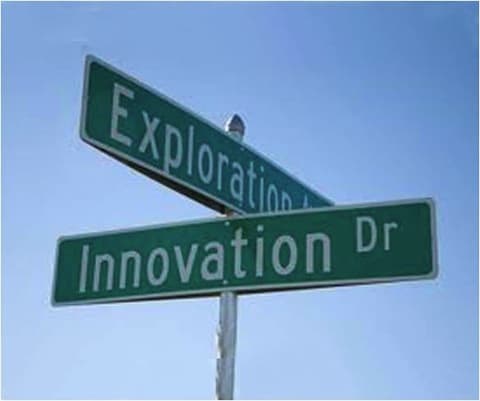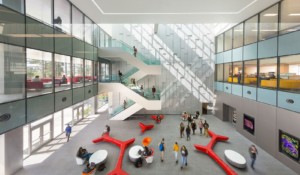Leading with Teacher Innovation

The viral adoption of web and mobile learning tools, apps, and resources is probably the most important trend in education over the last three years—it’s less discussed than the Common Core State Standards but has had a bigger impact on classroom practice. There are hundreds of thousands of teachers off and running, using the digital resources they can find and encouraging kids to do the same. As a result school and system heads need to figure out what’s actually going on in classrooms and how to leverage teacher leadership.
Starting with Teachers. There appears to be a lot of districts that are leading with teacher innovation–encouraging teachers to use the computers they have, apply for grants, and try stuff.
This approach takes advantage of teacher leadership but appears to produce mixed results. Evident on a recent school visit in ‘teacher leadership’ district were primary classrooms with mostly low level activity and intermediate grades using laptops like typewriters to input handwritten research papers. Some teachers used mini-grants to purchase adaptive learning products (i-Ready & Dreambox) and were trying to rotate them into a schedule full of traditional instruction.
Can 1,000 teachers experimenting self-organize into a high functioning system? I think the answer is no–at least not without capable leadership influencing and organizing the experimentation. But let’s back up and look at platforms and models.
State of the Platform. My favorite blends are engineered systems: design thinking meets application development–new school models complemented by new platforms– Summit and Michigan’s EAA . These talented teams use iterative development strategies to continue to improve the school model and platform. They also execute at a high level with consistently high quality teaching in every classroom–a great combination of Doug Lemov and Clay Christensen .
In contrast, the off the shelf stuff offers frustrating choices:
- less compelling, often frustrating comprehensive platforms with lots of flat and sequential content, no/limited ability to add open and teacher developed content, or
- component models running lots of apps on tablets: high flexibility but low manageability.
“The thing that keeps me up at night more than anything else is the interaction between the student, the teacher, the software, and the data,” said Scott Ellis of The Learning Accelerator. “How does it all come together in the classroom? I think this is where the transformation in education will occur, and how personalized learning and mastery-based progression will be brought to life. I am worried that we do not yet have the software solutions we need to make it work.”
Things are getting better–there are 10 vectors converging on better platforms–but the confusing long term shift to competency based learning is probably contributing to the lack agreement on desired future functionality and aggregated demand. Also, big heavyweight end of year grade level tests effectively lock in current policy/structures and slow innovations.
One of the best component models I’ve seen is Bracken STEAM Academy, a Vegas magnet school where grade span teams make project and app decisions from a long list of digital tools/resources.
However, it appears unlikely that an organic teacher led component model will adopt extended reach strategies (see OpportunityCulture) or build next-gen models. It’s more likely that they end up with blended classrooms that, for the most part, layer tech on top of schools we’ve got.
“We do have to power up teachers to be way better designers of the learning environment,” said Karen Cator, Digital Promise.
Disrupt Class or School? Michael Horn and Heather Staker looked at this question in their last paper “Is K-12 Blended Learning Disruptive?” Via email Horn said:
Although schools will not be disrupted, we see that online learning is poised to disrupt the traditional classroom (hence why the original book was called Disrupting Class, not Disrupting Schools). Of the blended-learning models we’ve identified, some are still hybrids–that is, sustaining innovations–relative to the classroom, and others are disruptive. The hybrids, which include the Station Rotation, Lab Rotation, and Flipped Classroom models, combine online learning with the traditional classroom. The disruptive models, which include the Flex, A La Carte, Enriched Virtual, and Individual Rotation models, dispense with the traditional classroom as we know it; they often get their start among non-consumption; and they offer benefits that accord to a new definition of what’s good. The disruptive models are the engines of change in education over the long run.
Our analysis has significant implications for educators and those working in education. For example, individual teachers often ask how they can start down the blended-learning path if their whole school isn’t on board. Our analysis shows that–by and large–the only options available to them are to implement sustaining innovations relative to their existing classroom–by flipping their classroom or maybe implementing a Station Rotation model. For school principals with significant autonomy over budget and school architecture, the story is different. They will be able to implement the disruptive models of blended learning–but our paper also points to solid reasons why they might want to implement both sustaining innovations as well as disruptive innovations. There are implications for superintendents, policymakers, philanthropists, and entrepreneurs as well.
The disruptive models of blended learning ultimately introduce new benefits that focus on providing individualization; universal access and equity; and productivity. This is where the real engines of change for personalization are in other words…. To implement truly disruptive models to the classroom, you need to deploy an autonomous team that is totally independent from the traditional classroom.
Where to start? EdLeaders should start by finding out what is actually happening in their classrooms. Six Red Marbles‘ Curriculum Pathfinder is a simple but powerful tool that helped Andover Public Schools (Kansas) better allocate their budget for instructional materials. After a quick Pathfinder survey, Andover discovered underutilized and situationally ineffective supplemental materials that accounted for nearly $100,000 of the district’s elementary school budget. This information, along with specific teacher feedback, enabled the district to make better-informed decisions about how to stretch their curriculum budget and improve the use of their existing resources.
The Blended Learning Implementation Guide suggests that, after finding out what’s actually happening, the next step is to identify ways to leverage teacher leadership. Examples include:
- Katie Decker, Bracken, encourages “in-school field trips” to classrooms where teacher leaders are innovating;
- In Washington D.C., CityBridge offers a one year learning opportunity to extend the reach of teacher leaders; and
- Mesa (Arizona) held a EdTech Expo and gave mini-grants to teacher teams.
EdLeaders need to encourage, nurture, and highlight teacher leadership to make rapid progress–but it must be combined with school and district redesign initiatives that, as Horn suggests, there are “solid reasons why [districts] might want to implement both sustaining innovations as well as disruptive innovations.
Beyond first steps, the key, as Cator suggests is supporting teachers as “designers of the learning environment”–but co-designers of the system not just the classroom.
For more, see these Christensen blogs:
- Is K-12 blended learning disruptive? It depends
- Secret to organizing teachers for blended learning
- Organize the team and then train the teachers
Six Red Marbles is a Getting Smart Advocacy Partner.







Paulina
Nice post! Will surely check them out. I hope you are familiar with this app called Nearpod! I have it in my iPad and it works great! We use it in school and it has many interactive features to enjoy altogether in class.
Julie Zedella
We were just discussing the issue of teacher leadership during a sub-committee meeting on Teacher Competencies for Blended Learning. Thanks for the timely post.
Replies
Tom Vander Ark
Thanks Julie, it's a bit of a paradox--you need to encourage and support teacher leadership AND you need to create a framework that transcends individual practices and, ultimately, works better for kids and teachers.